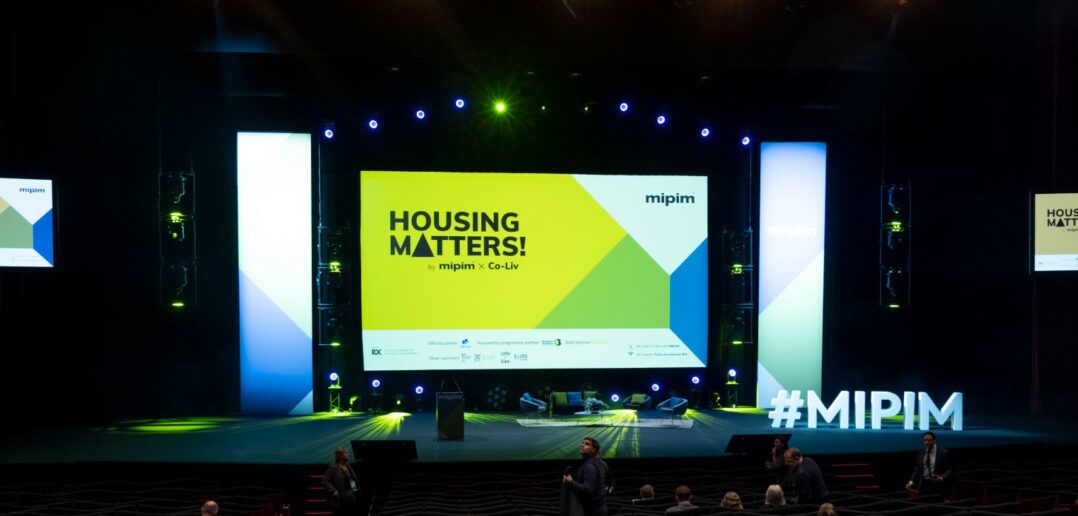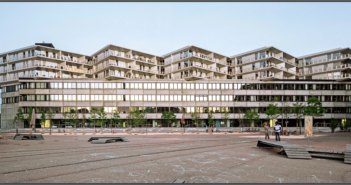The Housing Matters discussion commenced with a compelling conversation among well versed panelists about reinventing housing to an urban landscape. Moderator as well as CEO of Cutwork, Kelsea Crawford, was accompanied by panelists Olivier Durix (Executive Vice-President of Bouygues Immobilier), Sonia Lavadinho (Founder and CEO of Bfluid & Recherche & Expertise), and Michal Mlynar (UN Assistant Secretary, General and Acting Executive, Director United Nations, Settlements Programme, UN Habitat).
The cities we shape today will ultimately define the quality of life for those to come and it is crucial we pave the way for sustainable, vibrant, urban futures. There is an immense need to redefine the urban areas of today. Crawford develops an intriguing conversation with the panelists touching on four crucial areas of housing: current global demand for housing, lack of access to affordable housing, innovation needed to adapt to the new demands of housing, and the affordability and sustainability paradox of housing.

What is the global demand for housing today?
Mlynar explains that on a global level, there are roughly 2.8 billion people experiencing housing inadequacy and this number may rapidly increase if we do not address it. An even more increasing challenge is trying to mitigate the 1.1 billion people who live in the slums. These issues are not only prevalent in developing countries, but countries such as Europe and America who are struggling with homelessness and the increasing challenge for young individuals who represent the minority on a socioeconomic level to find affordable housing. According to Mlynar, to address the global housing challenge, we would hypothetically need to build around 96,000 housing units a day. While this number is extremely unrealistic, there are viable delivery models that can address the current housing crisis.
There is an increasing need for government agencies to redefine urban policies and look at housing as a priority. Political change can be a driving force and greatly influenced by partnerships within the real estate sector – combining all essential actors in both public (national and local governments) and private sectors (banks, investors, professional organizations such as construction companies, developers, architects, and urban planners). The overall focus should be to strengthen these partnerships and alignment among organizations, and MIPIM is a great way to influence these collaborations.
How can we solve the lack of access to affordable housing?
Affordable housing remains a prevalent topic of debate as interest rates and prices continue to rise making it difficult for developers to meet current housing demand. As Durix mentions, France’s main efforts have been centered around increasing people’s access to residential living. Post COVID, the market is an entirely different landscape with an immense lack of demand for office space, increased need for residential space, coupled with rising interest rates. France has began converting office buildings into multi-family developments and incorporating new business models such as co-living developments to mitigate the rising interest rates.
How do housing products need to change to meet the new needs of housing?
According to Lavadinho, inadequacy in housing innovation is largely due to the real estate industry failing to evolve alongside new life expectancies and the “in-betweens” people experience in their lifetime. Lavadinho defines the two main movements in our life in terms of housing patterns as “aloning” and “togethering.” We spend our twenties and thirties attempting to live alone, but today’s prices limit many to do so. While the second movement of life, “togethering,” occurs after marriage and growing a family. However, many individuals go through these “aloning” and “togethering” phases multiple times in their life span due to factors such as divorce, moving, marriage, etc; and these transitional periods account for roughly 10 years of an individual’s life span.
To address these “in between” demands, Lavadinho suggests the incorporation of nearness dynamics. Unfortunately, we see divorce as an increasingly common trend in today’s world and it has an immense impact on kids in these family situations. Rather than forcing the kids to move from home to home, Lavadinho suggests the development of homes that allow for flexibility and separation among the parents and kids, allowing each parent to have time with their children without the partners seeing one another. On an urban scale, nearness dynamics should be encouraged as it lessens the need for people to leave their neighborhoods they’ve grown to love. It is essential for government officials and investors to heighten their attention towards nearness dynamics and invest in properties that share similar qualities.
From a user perspective, lifestyle and relationships move quickly, but the housing market is lagging. As the traditional family dynamic undergoes significant changes, it’s clear that housing hasn’t adapted adequately. It’s imperative for the housing market to address these transition periods effectively.
How can we implement sustainable development initiatives while also staying cost conscious?
We are seeing a pattern of increased legislation and higher costs for sustainable development alongside a consistent demand for affordable housing. It’s an affordability and sustainability paradox. According to research collected by the United Nations,
Cities generate approximately 17% of global carbon emissions, yet 80% of global GDP is produced in urban settings.
While there lacks balance between sustainability and developing affordable living, it brings upon a challenge and great opportunity to transform the current housing market and introduce new social and economic innovations that consider climate challenges, decarbonization, building with new materials, among others. Mlynar explains “it doesn’t have to be rocket science; we need all the actors in the real estate sector to work together.” We have an opportunity to improve our lives and our futures, and we must be open to these new potential solutions.
Written by Haley Carangelo – University of San Diego Master’s of Science in Real Estate



